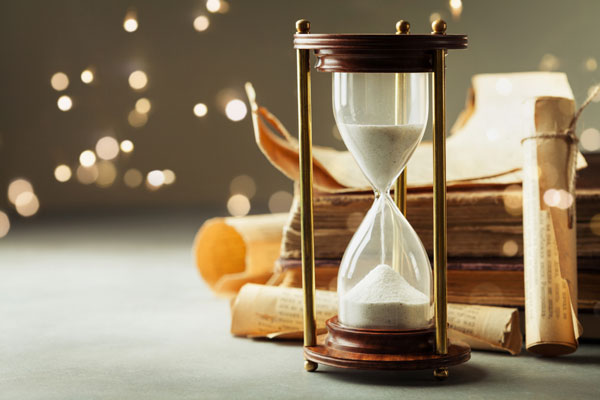
Storytelling exercise: how to use a time lapse in fiction.
Today’s post is an excerpt from my book, Story Drills: Fiction Writing Exercises. This is from a chapter called “Time Lapse,” which looks at how a story moves through time in a way that isn’t jarring to the reader. Enjoy!
Stories don’t take readers through every minute of the characters’ lives. Scenes jump around in time, and the context lets us know how much time has passed. A morning scene shows characters groggy-eyed and sipping coffee; in the next scene, the moon is out, so we know the story has jumped ahead to nighttime. Signifiers and transitions tell us when each scene is taking place.
Sometimes, rather than jumping from one point in time to another, a story needs to skip through time, letting readers know what happened without going into detail or showing the events that occurred in scenes.
For example, let’s say a character graduates from college and starts a new job. The story needs to jump ahead ten years. No events have occurred during those ten years that need to be included in the story as scenes, but readers need to know the character has been climbing the corporate ladder during that time.
A narrative can use a time lapse—exposition that quickly covers what has happened during a span of time:
Over the next ten years, Jane made countless sacrifices to achieve her goals. She gave up dating, put her social life on hold, and didn’t bother to move out of the studio apartment she’d been renting since her days as an undergraduate. It paid off when she eventually earned herself a spot for consideration as the company’s next chief financial officer—the executive position she’d been gunning for since landing an internship with the firm right out of college.
Time lapses can cover any amount of time; they’re slightly different from time jumps because they tell us what happened rather than simply moving to a new point in time.
Study:
Flip through a few novels you’ve read, find three to five time lapses, and study them. Do they blatantly state how much time has passed? Is the time lapse short (a few days) or long (years)? How much information is revealed about what happened during the time lapse? Would the time lapse have worked better if events had been fleshed out in scenes?
Practice:
Write three different time lapses:
- A single-sentence time lapse that spans less than a year.
- A paragraph that uses exposition to span more than one year.
- A lapse that spans at least a decade.
Questions:
When are time lapses necessary? Could some time lapses be avoided? Have you ever found a time lapse to be confusing or unnecessary? What makes a time lapse effective?
